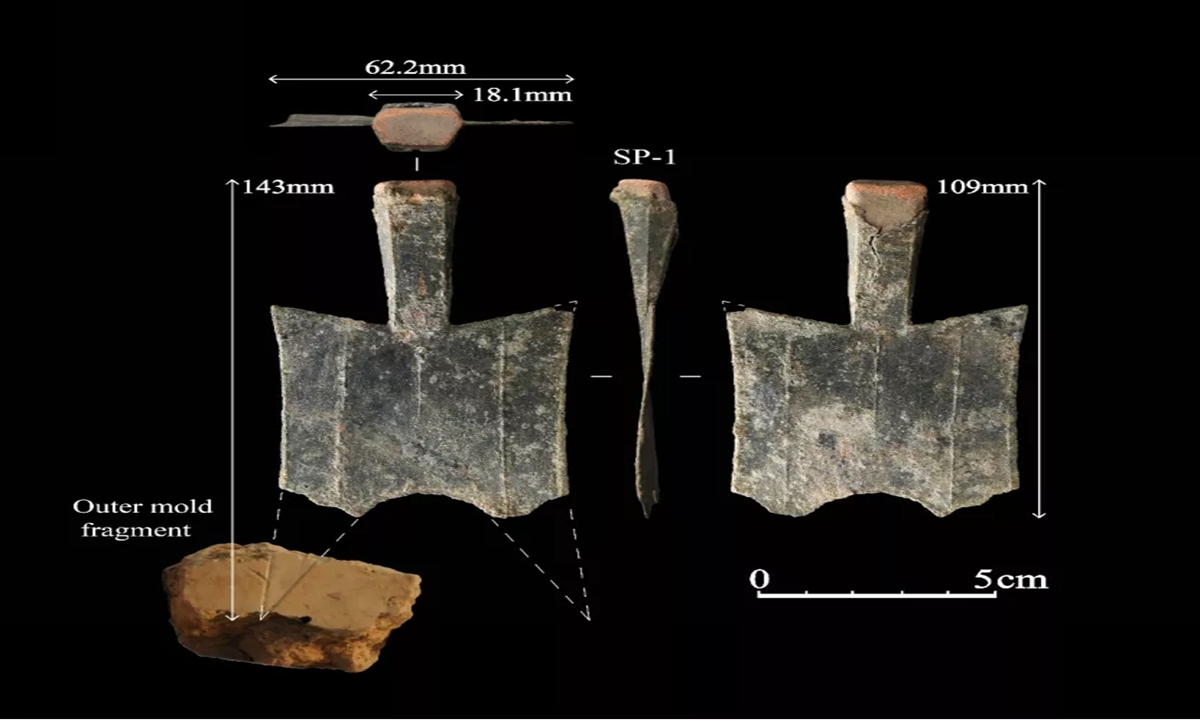
Spade coins uncovered in the copper casting workshop at a Guanzhuang site in Xingyang, Zhengzhou, Central China's Henan Province, by researchers from Zhengzhou University. Photo: Xinhua News Agency
A team of researchers from Zhengzhou University in Zhengzhou, the capital city of Central China's Henan Province, have found evidence of what appears to be the oldest coin-minting facility known to the world.
The study results have been published in Antiquity, a leading journal of archaeology in the UK. Using carbon dating theory, the researchers can tell that the copper casting workshop uncovered in an ancient foundry of Guanzhuang in Xingyang, Zhengzhou, began to carryout standardized coinage in around 640BC to 550BC.
"It makes Guanzhuang the world's oldest, securely dated minting site," reads the abstract of the paper.
The first author Zhao Hao said that he wrote the paper in the first half of last year, while excavations at the site took place between 2017 and 2018, according to Hongxing News on Monday.
During the excavation of the Guanzhuang site, the researchers found two bronze spade coins, named for the similarity to the shovel, and more than 60 pottery coin molds used for coin mintage.
"The coins found are a kind of currency that was in circulation in the Spring and Autumn Period (770BC-476BC), and the Warring States Period (475BC-221BC), and also one of the oldest metal coins in China, Gao Xiangping, the research team leader of Guanzhuang site, told the Xinhua News Agency.
The discovery of models was more exciting than finding the coins, as models hint that there would have been a coin-minting facility. "It's like finding a renminbi is not rare, but finding a mint is rare," Zhao said.
Zhao also noted that the coins were used for goods circulation and could appear in many places, but in the Spring and Autumn Period, the number of coin-minting workshops was obviously very limited.
The copper casting workshop began production roughly between 814BC to 750BC, and for about 150 years after that, the workshop mainly produced bronze ritual vessels, weapons. The minting of coins was later carried out when producing bronze utensils.
In China two minting sites for spade coins - at Xintian (Shanxi) and Xinzheng (Henan) - have been suggested to date back to the Middle to Late Spring and Autumn Period (650BC-500 BC), but in both cases the proposed dates are based on ceramic evidence only and are unconfirmed by radiocarbon-dating, introduced the paper.




